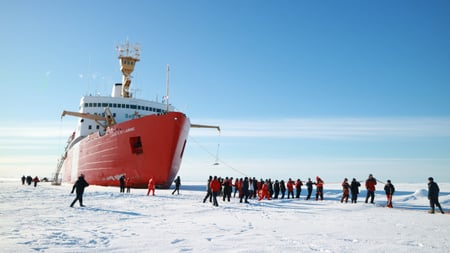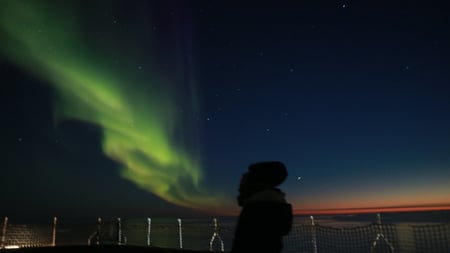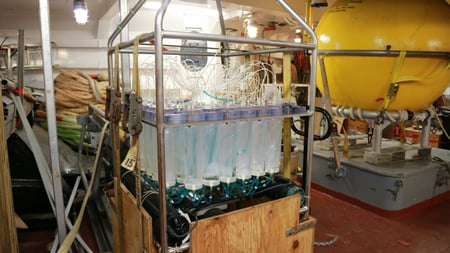I joined the Arctic ocean cruise of CCGS Louis S. St-Laurent (Fig.1) from September 6 to October 2. During the cruise, CTD/Rosette observations, zooplankton net tows, XCTD observations, sea ice observations, and recovery and deployment of moorings and ITP buoys were conducted. Our group sampled seawater for chemical analysis such as total alkalinity (TA) and oxygen isotope ratio of seawater (δ18O), and also recovered a remote access sampler (RAS) that had been deployed at mooring A station (75゜N 150゜W).
TA is an important component in understanding of carbon cycle and ocean acidification. It is also used with salinity and δ18O to identify the origin of freshwater because TA in river water is higher than in sea water and values are different for each river. Preliminary results showed that TA was higher only at the surface near the mouth of MacKenzie river this year.
By using a RAS, we can collect seawater throughout the year, including winter months when ship observation is rarely possible. We sub-sampled water from the RAS for analysis of salinity, TA, Dissolved inorganic Carbon (DIC), δ18O and nutrients. We have measured salinity, TA and DIC onboard the ship. δ18O and nutrients will be measured later in our laboratory.
At the beginning of the cruise, I was nervous because it was the first time for me to join a foreign cruise and to go to the Arctic ocean. However, I could enjoy the cruise safely because all scientists, including Professor Tateyama from KITAMI Institute of Technology, and crews supported me. I could have many precious experiences such as watching aurora and polar bear, and working on sea ice.
To share my experiences, I will upload movies about this cruise on Youtube. Please check them at https://www.youtube.com/channel/UCqL320uFgBfsrZv2OC7jOvg.
Sayaka Kumakawa (TUMSAT)







